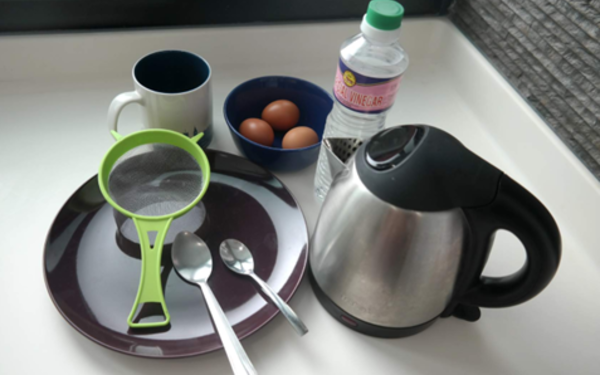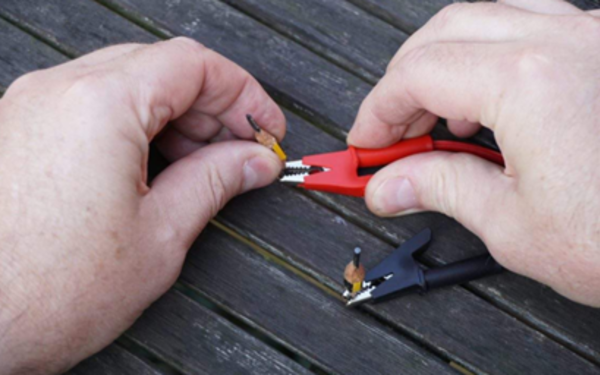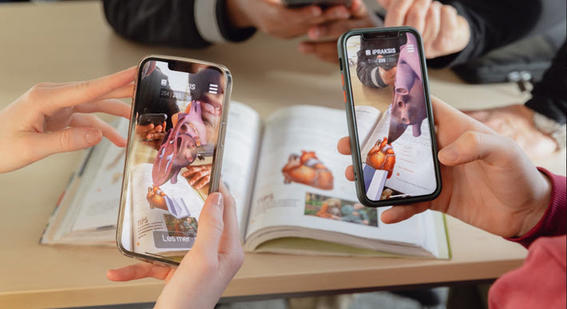The difference between education spending per school-age child in the poorest and wealthiest countries is stark: it averages $53 per year in low-income countries, rising to $7,800 in high-income countries.
That’s according to data published in April 2023 by the World Bank , which considers spending per school-age child as the most accurate indicator of educational financing.
So, it’s little surprise that when we at Cambridge Partnership for Education work with ministers and other education reform stakeholders in many countries, a lack of schools, teachers and equipment is often among the biggest hurdles we must overcome together.
This has been true on many projects, such as our partnership to help improve education for children in the Rohingya refugee camps of Bangladesh, where learning centres have no mobile reception and no electricity.
Hands-on science with low resources
Limited resources can make teaching practical science a particular challenge. How can children in schools with little or no equipment or materials conduct scientific investigations, or if teachers have had insufficient training or time to deliver practical lessons?
Yet, practical science is an essential part of scientific education. Practical activities and experimentation can be among the most engaging and memorable parts of science lessons at school. They introduce students to scientific ideas and theories and demonstrate how scientists work. They may even spark a lasting curiosity that leads to a career as a scientist.
At Cambridge Partnership for Education, one way we can help governments with low resources to deliver practical science is to draw on solutions from across Cambridge University Press & Assessment.
One of those solutions is Resource Plus, an interactive teaching and learning platform that is available to Cambridge International schools. Cambridge Assessment International Education launched this initiative in 2017 in response to feedback from teachers, who had faced difficulties incorporating practical science in their lessons. It has proven very popular, with 2.5 million interactions on the platform between 2020 and 2022.
Resource Plus science activities are laboratory-based, so we have since added another solution to support partners to offer practical science in schools - ‘Everyday Science’. This initiative is intended to make practical science available almost anywhere to learners, helping them to carry out safe and engaging scientific investigations.
“Practical science isn’t just for the laboratory, and not all experiments require expensive lab equipment or chemicals”, says David Harrison, Head of Curriculum Support (STM) at Cambridge Assessment International Education, which runs Everyday Science.
With Everyday Science, students use everyday items that are available in their homes or local area, ranging from sticky tape and paperclips to baking soda and batteries. This simplicity gives teachers flexibility: they can choose whether students complete the investigations independently, for example as a homework task, or in a normal classroom, if there isn’t a lab facility in the school.
Mark Coventry, a former science teacher and head of department who works alongside David on Everyday Science, says: “The purpose is to support the delivery of practical science tasks, even if resources and time are limited”. Mark, who is Senior Development Manager (STM) in the Teaching and Learning Division at Cambridge Assessment International Education, adds: “The tasks can be done at home and at times when teachers can’t fit them into lab sessions.”
For example, one of the Everyday Science experiments is intended to help learners investigate the effect of physical factors on proteins. They need little more than some eggs and vinegar, together with some regular kitchen equipment like spoons and cups.

Learners work through the investigation, responding to reflective challenges as they go. Their progress is stored in an online journal, enabling students to review their findings, export their work and submit it to their teachers.
There are currently 18 investigations to choose from on Everyday Science, with 12 more to come in the coming months. The tasks are split across chemistry, biology and physics, with each one linked to the experimental skills and investigations that learners need to demonstrate as part of their course.
They show that practical science can be achieved almost anywhere, and even with very limited resources.
Just the beginning
People around the world are already using the practical investigations available from Everyday Science in their schools, and the feedback so far from students has been very positive.
“I really liked how I was guided through the practical investigation in a step-by-step way,” said one learner, adding “It helped me make predictions and analyse results”.
Another student said: “I learned a lot about how to do a practical investigation properly and now feel more confident in my ability to plan my own investigation.”
Everyday Science is just the first step. Look out for Everyday Maths and Everyday Computer Science, which will be available next year. Mark says: “These resources intend to help learners put maths and computer science into practice in real world situations, to apply knowledge in a project and investigative basis”.
Limited resources mean that providing hands-on science will remain a challenge in many countries and contexts. But by using solutions such as Everyday Science, we can help governments equip learners with the necessary skills and knowledge needed for the future.
If you want to find out more about Everyday Science, and how we can help you to launch practical science in your school system, please get in touch.




